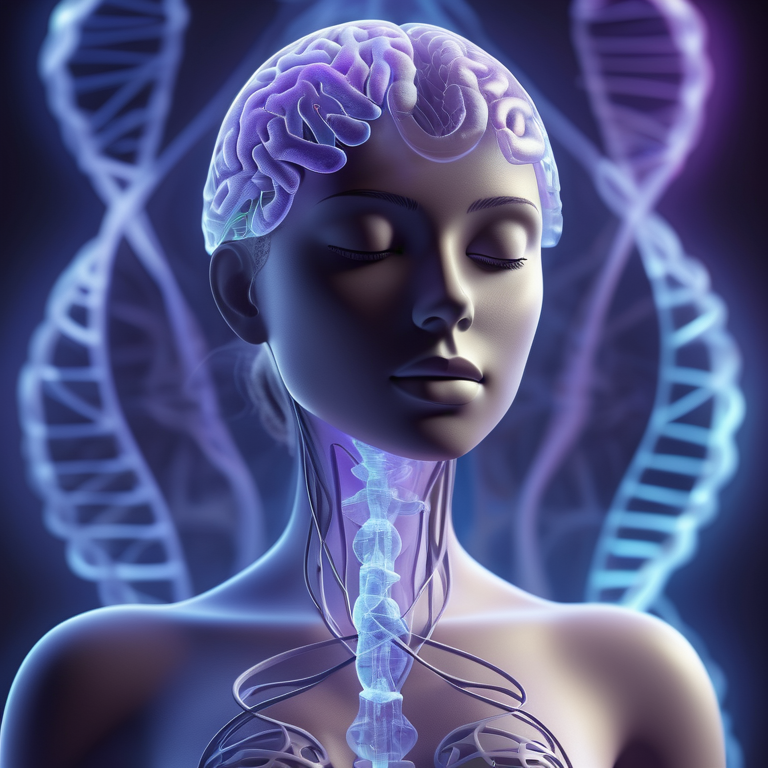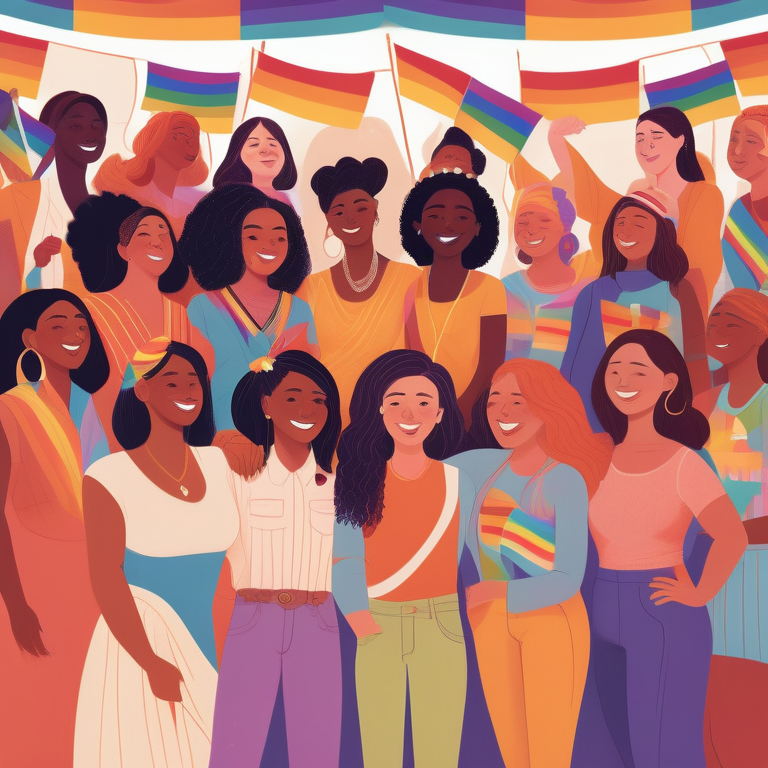Pioneering Studies in Female Sexuality

Key Highlights
- Female sexuality is complex and varies between individuals, with no unified definition of desire
- Recent research challenges the notion that men have higher desire than women
- Understanding female sexuality requires a comprehensive approach, including the assessment of sexual behaviors, responses, and individual differences
- The sexual response cycle consists of desire, excitement, orgasm, and resolution, each with unique aspects
- Assessment strategies for female sexuality need to consider physiological, cognitive, affective, and behavioral dimensions
- Research on female sexuality needs to address the role of cultural influences, hormones, and psychological factors
Introduction
Female sexuality has long been a topic of fascination and inquiry. From Sigmund Freud to Mel Gibson, scholars and researchers have been trying to understand the complexities of female desire. However, despite decades of research, there is still no unified definition or understanding of female sexuality. It is increasingly recognized that female desire cannot be summarized in terms of a single experience or characteristic. Instead, it varies between women and within individuals, spanning a diverse spectrum of manifestations, including the often overlooked aspect of solitary masturbation and the influence of porn.
Recent research has challenged the prevailing belief that men have higher sexual desire than women. Studies have shown that differences between the sexes may be more nuanced or even non-existent, depending on how desire is defined and measured. This realization has led to a reevaluation of the factors that influence desire and the development of comprehensive models of female sexuality, including pioneering studies conducted at the University of Utah by professor Lisa Diamond, who explores the enduring enigma of female sexual desire and what triggers it in the first place.
This blog explores pioneering studies in female sexuality, focusing on the historical perspectives, key studies, the role of neuroscience, cultural influences, and psychological aspects. By understanding these different dimensions of female sexuality, we can gain a deeper appreciation of the complexity and diversity of women’s sexual experiences.
Historical Perspectives on Female Sexuality
Throughout history, female sexuality has been a topic of both fascination and fear. It has been shaped by cultural, religious, and social beliefs, often resulting in the repression and stigmatization of women’s desires. However, with the advent of gender studies and the recognition of sexual orientation as a valid aspect of human diversity, our understanding of women’s sexuality has evolved to include the impact of movies and pornography on sexual pleasure.
Early theories and misconceptions about female sexuality were influenced by societal norms and gender roles. These theories often portrayed women as passive and lacking sexual desire. However, the pioneering work of psychoanalyst Sigmund Freud challenged these notions and emphasized the importance of sexual development in both men and women.
Freud’s theories on sexual development and the role of the unconscious mind had a significant impact on our understanding of female sexuality. He argued that sexual desire is a fundamental human instinct and that it plays a crucial role in shaping our thoughts, behaviors, and relationships. While his theories have been criticized for their limited perspective, they paved the way for further research into human sexuality.
One of the key studies that shaped our understanding of female sexuality is the work of Masters and Johnson. Their research on the sexual response cycle in men and women provided a scientific framework for studying sexual behaviors and experiences. They described the four stages of the sexual response cycle – desire, excitement, orgasm, and resolution – and highlighted the importance of physiological and psychological factors in sexual arousal and satisfaction.
Another influential study is the Kinsey Reports, conducted by Alfred Kinsey and his colleagues in the 1940s and 1950s. These reports challenged prevailing beliefs about sexual behavior and revealed the diversity of sexual practices among men and women. They provided a foundation for the modern study of human sexuality and emphasized the need for a more inclusive and comprehensive understanding of sexual behavior.
Early Theories and Misconceptions
Early theories about female sexuality were often influenced by societal norms and gender roles. Women were often portrayed as passive and lacking sexual desire, while men were seen as inherently more sexual. These theories perpetuated misconceptions about women’s sexuality, leading to stigma and repression.
One common misconception was the belief that women were not interested in or capable of experiencing sexual pleasure. This belief was rooted in the idea that women’s primary role was reproduction, and that their sexual desires were secondary or non-existent. As a result, women’s sexual desires and experiences were often ignored or dismissed.
Another misconception was the notion that women’s sexual desires were solely driven by the desires and needs of their male partners. Women were expected to prioritize their partner’s pleasure and to suppress their own desires. This belief further reinforced the idea that women’s sexual desires were not important or valid.
These early theories and misconceptions limited our understanding of female sexuality and perpetuated harmful stereotypes. It was not until the advent of more inclusive and comprehensive research that these misconceptions began to be challenged and debunked.
The Impact of Freud’s Theories
Sigmund Freud’s theories on sexual development and the role of the unconscious mind had a profound impact on our understanding of female sexuality. Freud emphasized the importance of sexual development in both men and women and argued that sexual desire is a fundamental human instinct.
One of Freud’s key contributions to the field of female sexuality was his theory of psychosexual development. According to Freud, individuals pass through various stages of psychosexual development, each characterized by a different focus of pleasure. In the phallic stage, which occurs during early childhood, Freud proposed that girls experience penis envy and develop a desire for a male partner.
Freud’s theories also shed light on the unconscious influences on sexual desires and behaviors. He argued that our unconscious mind plays a significant role in shaping our sexual desires, fantasies, and behaviors. This idea challenged prevailing beliefs about women’s sexual desires and highlighted the importance of exploring the unconscious motivations behind sexual behaviors.
While Freud’s theories have been criticized for their limited perspective and lack of empirical evidence, they paved the way for further research into human sexuality. His emphasis on sexual development and the unconscious mind opened up new avenues for understanding the complexities of female sexuality.
Key Studies That Shaped Our Understanding
Several key studies have played a crucial role in shaping our understanding of female sexuality. These studies have explored various aspects of women’s sexual experiences and have provided valuable insights into the factors that influence desire, arousal, and satisfaction. By examining these studies, we can gain a deeper appreciation of the diversity and complexity of female sexuality, including the anatomy of the clitoris as studied by O’Connell et al. in 2005.
Masters and Johnson’s Research
The groundbreaking research conducted by William Masters and Virginia Johnson in the 1960s and 1970s revolutionized our understanding of human sexuality. Their studies on the sexual response cycle provided a scientific framework for studying sexual behaviors and experiences.
Masters and Johnson’s research focused on observing and documenting the physiological and psychological responses that occur during sexual arousal and orgasm. They described the four stages of the sexual response cycle – desire, excitement, orgasm, and resolution – and highlighted the importance of both physiological and psychological factors in sexual activities, pleasure, and satisfaction.
Their work challenged prevailing beliefs about female sexuality, which often portrayed women as passive and lacking sexual desire. Masters and Johnson’s research, which involved observing volunteers engaging in self-stimulation and sexual intercourse, showed that women are capable of experiencing sexual pleasure and that their sexual responses are similar to those of men. This groundbreaking research paved the way for further studies on female sexual health and satisfaction, as well as the treatment of conditions such as erectile dysfunction.
The Kinsey Reports
The Kinsey Reports, conducted by Alfred Kinsey and his colleagues in the 1940s and 1950s, provided a groundbreaking look into the sexual behaviors and experiences of men and women. These reports challenged prevailing beliefs about sexual behavior and revealed the diversity of sexual practices among individuals.
Kinsey’s research involved extensive interviews with thousands of men and women, covering topics such as sexual orientation, sexual behaviors, and sexual preferences. The reports provided a comprehensive overview of human sexual behavior and highlighted the need for a more inclusive and comprehensive understanding of sexuality.
One of the key findings of the Kinsey Reports was the wide range of sexual behaviors and experiences among both men and women. The reports revealed that sexual behavior is more varied and complex than previously believed, challenging the prevailing stereotypes about sexual behavior and desires.
The Kinsey Reports had a significant impact on the field of sexuality studies, paving the way for further research and contributing to the emerging field of sexology. Kinsey’s work highlighted the need for a more open and inclusive discussion of human sexuality and provided a foundation for future studies on female sexuality.
Evolution of Female Sexuality in Literature
Literature has played a significant role in shaping our understanding of female sexuality. Over the years, writers have explored various aspects of women’s sexual experiences, challenging societal norms and shedding light on the complexities of desire, pleasure, and identity. From feminist writings to contemporary literature, the portrayal of female sexuality has evolved, reflecting the changing attitudes and perspectives of society.
Feminist Writings and Their Contribution
Feminist writings have been instrumental in challenging traditional views of female sexuality and highlighting the importance of women’s sexual pleasure and agency. These writings have provided a platform for women to share their experiences and perspectives on sexuality, challenging societal expectations and norms.
Feminist authors like Simone de Beauvoir and Betty Friedan have explored the social and cultural factors that shape women’s sexual experiences and desires. They have emphasized the importance of autonomy and consent in sexual relationships and have called for a more inclusive and comprehensive understanding of women’s sexual health and satisfaction.
By giving voice to women’s experiences and challenging patriarchal norms, feminist writings have contributed to a broader understanding of female sexuality. They have opened up a dialogue about the complexities of desire, pleasure, and identity, empowering women to explore and embrace their own sexual agency.
Contemporary Literary Voices
In recent years, contemporary literature has continued to explore and challenge societal norms around female sexuality. Authors like Roxane Gay, Chimamanda Ngozi Adichie, and Sally Rooney have delved into themes of sexual identity, desire, and agency, offering nuanced and diverse perspectives.
These contemporary literary voices have expanded the representation of women’s sexual experiences, highlighting the intersections of race, class, gender, and sexuality. Their works explore the complexities of desire, pleasure, and power dynamics, challenging traditional narratives and offering new insights into the diverse experiences of women.
By exploring the complexities of female sexuality in literature, these authors contribute to a more inclusive and nuanced understanding of women’s desires, pleasure, and sexual identities. Their works encourage readers to question societal norms and expectations, fostering a more open and inclusive dialogue about female sexuality.
The Role of Neuroscience in Understanding Female Desire
Neuroscience has provided valuable insights into the physiological processes that underlie female desire and arousal. By studying brain imaging and hormonal influences, researchers have gained a deeper understanding of how the brain and body interact to create and experience sexual desire.
Brain Imaging Studies
Brain imaging studies have allowed researchers to observe the neural activity associated with sexual desire and arousal. These studies have revealed the involvement of various brain regions in the experience of sexual pleasure and arousal.
One study conducted by Komisaruk and colleagues used functional magnetic resonance imaging (fMRI) to measure brain activity in women during sexual stimulation. The results showed increased activity in the brain regions associated with pleasure and reward, such as the prefrontal cortex and the ventral striatum.
Another study by Hamann and colleagues used positron emission tomography (PET) to measure brain activity in women while they viewed sexual images. The findings indicated increased activity in the amygdala, which is involved in emotional processing, and the anterior cingulate cortex, which is associated with attention and arousal.
Overall, these brain imaging studies provide valuable insights into the neural mechanisms underlying female desire and arousal. They highlight the complex interplay between brain activity, emotions, and sexual experiences.
|
Column Name A |
Column Name B |
|
Brain imaging techniques |
Functional magnetic resonance imaging (fMRI), Positron emission tomography (PET) |
|
Brain regions involved in sexual pleasure and arousal |
Prefrontal cortex, Ventral striatum, Amygdala, Anterior cingulate cortex |
|
Neural mechanisms of female desire and arousal |
Complex interplay between brain activity, emotions, and sexual experiences |
Hormonal Influences on Sexuality
Hormones play an important role in regulating sexual desire and function in both men and women. Testosterone and estrogen, in particular, have been studied extensively for their influence on sexual health and behaviors.
Testosterone is often referred to as the “male” hormone, but it is also present in women and plays a critical role in sexual desire. Studies have shown a positive correlation between testosterone levels and sexual desire in women, with higher levels associated with increased sexual motivation.
Estrogen, on the other hand, is primarily associated with the female reproductive system, but it also affects sexual function. Fluctuations in estrogen levels throughout the menstrual cycle can impact sexual desire and arousal. During periods of high estrogen, such as around ovulation, women may experience increased sexual motivation.
Other hormones, such as progesterone and oxytocin, also play a role in sexual desire and function. Progesterone has been associated with decreased sexual desire, while oxytocin, often referred to as the “love hormone,” is involved in social bonding and sexual satisfaction.
Understanding the hormonal influences on sexuality can help inform treatments for sexual dysfunctions and guide interventions to enhance sexual health and satisfaction.
Cultural Influences on Female Sexuality
Cultural factors have a significant impact on our understanding and experience of female sexuality. Sexual norms, societal expectations, and cultural attitudes towards sex shape our beliefs and behaviors around sexuality.
Sexual practices and attitudes vary across cultures, reflecting diverse cultural values and beliefs. Some cultures have more conservative attitudes towards sex, placing greater emphasis on modesty and chastity. In contrast, other cultures may have more permissive attitudes, embracing sexual freedom and exploration.
Cross-cultural studies have highlighted the diversity of sexual practices and beliefs around the world. For example, research has shown variations in sexual practices, attitudes towards contraception, and sexual education across different cultures. These variations underscore the importance of understanding cultural influences on female sexuality.
Media also plays a significant role in shaping cultural attitudes towards female sexuality. The portrayal of women’s sexuality in movies, TV shows, and advertisements can reinforce stereotypes and perpetuate unrealistic expectations. The media’s representation of sexuality can influence individuals’ beliefs and behaviors, shaping their understanding of what is considered normal or desirable.
Challenging cultural norms and expectations around female sexuality is crucial for creating a more inclusive and empowering environment for women. By understanding and addressing cultural influences, we can promote healthy and positive attitudes towards female sexuality and support individuals in embracing their own desires and preferences.
Sexuality Across Different Cultures
Cross-cultural studies have revealed fascinating insights into the diversity of sexual practices and attitudes around the world. These studies highlight the impact of cultural norms, beliefs, and values on sexual behaviors and experiences.
For example, research has shown variations in sexual practices, such as the acceptance of premarital sex, extramarital affairs, and same-sex relationships. In some cultures, premarital sex may be highly stigmatized, while in others it is more accepted. Similarly, attitudes towards same-sex relationships can vary widely across cultures, reflecting cultural, religious, and political beliefs.
Cultural factors also influence sexual education and the transmission of knowledge about sexuality. Some cultures may have more open and comprehensive sexual education programs, while others may have more conservative or limited approaches. These differences can impact individuals’ understanding of their own bodies, sexual health, and relationships.
Understanding the diversity of sexual practices and attitudes across cultures is crucial for promoting cultural sensitivity and inclusivity. It challenges ethnocentric views and encourages individuals to recognize and respect the diversity of sexual experiences and preferences.
The Media’s Role in Shaping Perceptions
The media plays a significant role in shaping cultural attitudes towards female sexuality. Portrayals of women’s sexuality in movies, TV shows, and advertisements can influence societal perceptions and expectations.
The media often perpetuates unrealistic and idealized images of female sexuality, focusing on beauty standards and sexualized representations. These images can create pressure and insecurities, impacting individuals’ self-esteem and body image. They can also reinforce gender stereotypes and perpetuate harmful ideas about women’s sexual desires and behaviors.
Additionally, the media’s representation of sexual relationships and behaviors can shape individuals’ attitudes and beliefs about what is considered normal or desirable. It can influence perceptions of consent, communication, and sexual pleasure. The media’s influence is especially significant for young people who are still developing their understanding of sexuality.
Recognizing the media’s role in shaping perceptions of female sexuality is important for promoting a more positive and inclusive environment. By challenging harmful representations and promoting diverse and realistic portrayals of female sexuality, we can foster healthier attitudes and beliefs about women’s sexual desires and experiences.
Psychological Aspects of Female Sexuality
Psychological factors play a crucial role in understanding female sexuality. Emotional connectivity, mental health, and psychological therapy are all important aspects that contribute to women’s sexual experiences and satisfaction.
Emotional Connectivity and Desire
Emotional connectivity is an important aspect of female sexuality. The quality of emotional connection in a relationship can significantly impact sexual desire and satisfaction.
Research has shown that emotional intimacy, trust, and communication are closely linked to sexual desire and arousal. When individuals feel emotionally connected to their partners, they are more likely to experience a stronger desire for sexual intimacy, a key aspect of sexual attraction. On the other hand, a lack of emotional connection or unresolved emotional issues can contribute to decreased sexual desire.
It is important for individuals to cultivate emotional connectivity in their relationships to enhance their sexual experiences. This can involve open and honest communication, building trust, and prioritizing emotional intimacy.
Impact of Mental Health on Sexual Health
Mental health plays a significant role in sexual health and satisfaction. Psychological factors such as stress, anxiety, and depression can impact sexual desire and function.
Mental health issues can contribute to decreased sexual desire, difficulties with arousal, and challenges in maintaining sexual satisfaction. For example, individuals with depression may experience a loss of interest in sex, while those with anxiety may struggle with performance anxiety or fear of intimacy.
Addressing mental health concerns and seeking appropriate treatment can improve sexual health and satisfaction. Psychological therapy, such as cognitive-behavioral therapy, can help individuals explore and address the underlying psychological factors that may be impacting their sexual health.
It is important to recognize the interconnectedness of mental and sexual health and seek holistic approaches to enhance overall well-being. By addressing mental health concerns, individuals can improve their sexual experiences and quality of life.
Conclusion
In the realm of female sexuality, a historical journey intertwines with groundbreaking studies, literary expressions, and neurological explorations. From debunking myths to embracing evolving perspectives, the narrative of female desire unfolds through the lenses of culture, psychology, and biology. As we ponder on the impact of Freud’s theories and delve into contemporary literary voices, the essence of female sexuality emerges as a multifaceted tapestry. The intersection of emotional connectivity, mental health, and cultural influences resonates deeply in understanding the complexity of female desire. Embracing curiosity and fostering open dialogues are vital for nurturing further research in this intriguing field. Share the enlightening journey of female sexuality on social media to spark meaningful conversations.
Frequently Asked Questions
What Are Common Myths About Female Sexuality?
Common myths about female sexuality include the belief that women are not interested in or capable of experiencing sexual pleasure, that their desires are solely driven by their male partners, and that sexual education is unnecessary for women. These myths perpetuate misconceptions and hinder a comprehensive understanding of female sexuality.
How Has Female Sexuality Evolved Over Time?
Female sexuality has evolved over time, reflecting changes in societal norms, cultural attitudes, and scientific understanding. From the historical suppression of female desire to the modern sexual revolution, women’s sexuality has undergone significant changes. These changes have been driven by advancements in gender studies, increased awareness of sexual orientation, and the recognition of women’s rights and sexual agency.
What Role Do Hormones Play in Female Desire?
Hormones play a crucial role in regulating female desire. Testosterone and estrogen, in particular, have been studied for their influence on sexual function. Testosterone is associated with increased sexual desire, while estrogen fluctuations throughout the menstrual cycle can impact sexual motivation. Understanding the role of hormones can help inform treatments for sexual dysfunctions and enhance sexual health.
Can Psychological Therapy Enhance Female Sexual Health?
Psychological therapy can play a significant role in enhancing female sexual health. Therapy can address underlying psychological factors that may be impacting sexual desire, arousal, and satisfaction. By exploring emotions, communication patterns, and relationship dynamics, individuals can improve their sexual experiences and overall well-being.
What Future Research is Needed in the Field of Female Sexuality?
Future research in the field of female sexuality should focus on emerging fields such as gender studies, cultural influences, and the role of technology in shaping sexual experiences. Additionally, there is a need for more comprehensive models that integrate physiological, psychological, and sociocultural factors to better understand the complexities of female desire and satisfaction.





